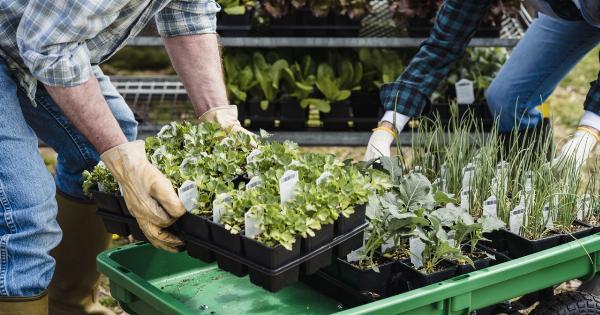Fruits and vegetables are an essential part of a healthy diet, providing us with important nutrients, vitamins, and minerals. However, many conventional fruits and vegetables are commonly treated with pesticides to protect them from pests and diseases.
While these pesticides play a critical role in ensuring crop yields, they can also pose a risk to human health.
Several studies have raised concerns about the potential health effects of pesticide residues on fruits and vegetables.
The Environmental Working Group (EWG), a nonprofit organization dedicated to protecting public health and the environment, annually releases a list called the “Dirty Dozen.” This list highlights the fruits and vegetables with the highest pesticide contamination, based on their analysis of government data. Let’s explore some of the most pesticide-contaminated fruits and vegetables according to this list.
The Dirty Dozen: Most Contaminated Fruits
1. Strawberries
Strawberries often top the list when it comes to pesticide contamination. They typically receive numerous applications of pesticides during their growth cycle, making them highly susceptible to contamination.
If consumed, strawberries can expose you to multiple different types of pesticides.
2. Spinach
Spinach, a nutritious leafy green, is another fruit commonly found with high pesticide contamination levels. The thin and porous nature of spinach leaves makes it easy for pesticides to seep in and remain firmly attached.
3. Kale
Kale, a popular superfood known for its high nutritional value, is also often contaminated with pesticides.
The Environmental Working Group discovered residues from multiple pesticides in kale samples, including those prohibited or restricted in Europe.
4. Nectarines
Nectarines, a juicy and delicious stone fruit, also rank high in pesticide contamination. The EWG found traces of multiple pesticides in nearly every sample of nectarines tested.
5. Apples
Apples, a widely consumed fruit, frequently make it to the Dirty Dozen list as well. Various pesticides, including those linked to neurotoxicity and hormone disruption, have been found on apples.
6. Grapes
Grapes, both conventional and imported, have exhibited high pesticide residues. These residues can include chemicals with known or suspected links to cancer, reproductive issues, and nervous system disorders.
7. Peaches
Peaches are a delicious fruit that unfortunately tends to have high levels of pesticide contamination. Multiple pesticides, including fungicides and insecticides, have been detected in peaches.
8. Cherries
Cherries are prone to pest attacks, resulting in growers often resorting to pesticide applications. These applications contribute to cherries’ presence on the Dirty Dozen list.
9. Pears
Pears also commonly have pesticide residues. Some pear samples tested positive for up to 12 different pesticides.
10. Tomatoes
Tomatoes, a versatile fruit used in various dishes, have been found to contain pesticide residues, raising concerns over their safety. The pesticides detected on tomatoes include known or suspected neurotoxins and endocrine disruptors.
The Dirty Dozen: Most Contaminated Vegetables
1. Celery
Celery often ranks high in terms of pesticide contamination. Its structure, consisting of numerous layers, makes it challenging to effectively wash off pesticide residues.
2. Potatoes
Potatoes, a staple crop, are frequently treated with a range of pesticides to protect against pests and diseases. The higher pesticide residue levels in potatoes are a cause for concern.
3. Bell peppers
Bell peppers, both in their green and red forms, can be heavily contaminated with pesticides. The EWG found that bell peppers contained numerous different pesticide residues.
4. Tomatoes
In addition to being found in the fruits list, tomatoes also have a place among the most pesticide-contaminated vegetables.
5. Cucumbers
Cucumbers, often consumed with their skin, can absorb and retain pesticide residues. Multiple pesticides have been detected on cucumbers, some of which are known carcinogens.
6. Snap peas (imported)
Imported snap peas have shown pesticide contamination in the EWG’s analysis. The samples were found to contain residues of insecticides, fungicides, and other chemicals.
7. Green beans
Green beans, a popular vegetable, have also been found to contain multiple pesticide residues. The presence of these residues raises concerns regarding the potential health risks posed by green beans.
8. Kale
Kale, although primarily considered a leafy green, can be categorized as both a fruit and a vegetable. Hence, it appears on both lists due to its high pesticide contamination.
9. Collard greens
Collard greens are frequently exposed to pesticides during their growth cycle. The EWG detected multiple pesticide residues on samples of collard greens.
10. Summer squash
Summer squash, including zucchini and yellow squash, have also been found to contain pesticide residues. This makes it essential to consider organic options when choosing these vegetables.
It’s worth noting that the EWG’s Dirty Dozen list should not discourage you from consuming fruits and vegetables. The health benefits of consuming a variety of fruits and vegetables far outweigh the potential risk of pesticide exposure.
However, if you’re concerned about pesticide contamination, you may opt for organic varieties or wash and peel fruits and vegetables thoroughly to reduce residue levels.






























